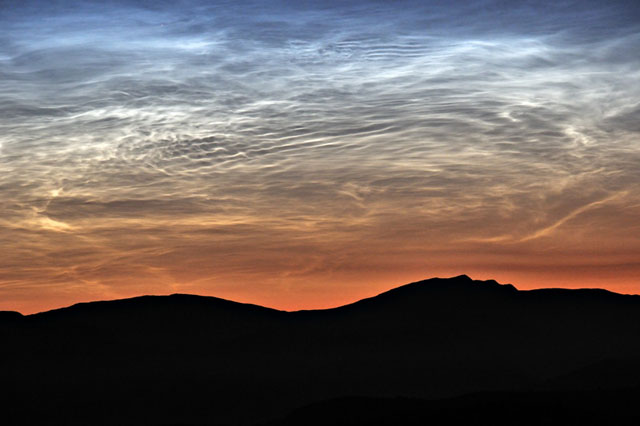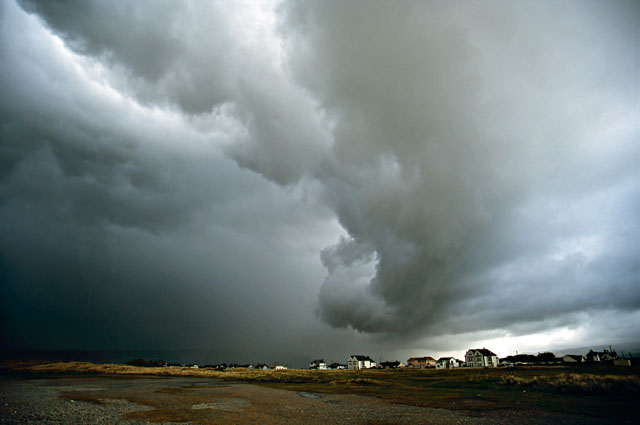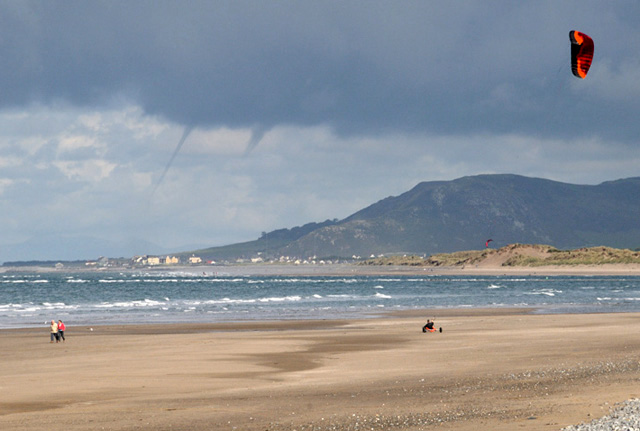April 17, 2012
BACK TO WEATHER-BLOG MENU
The Welsh Weather & Dyfi Valley landscapes Image-Library - Click HERE
I've been meaning to write this post for some time, and a recent conversation has spurred me to get on with it. The idea originally came to me after reading a blog-post by the seasoned weather-photographer Roger Coulam, who I first met when we were both giving talks on weather-photography at a Royal Meteorological Society meeting down in London a few years ago. In the post, he cites another fellow photographer:
As I was writing this post I came across a very relevant piece by David Parker relating to beauty in art, which highlights some of my own personal struggles with pretty pictures.
“Beauty has been described recently by the English sculptor Grayson Perry as ‘the elephant in the room that many artists find difficult to ignore’. Beauty requires no commentary for its appreciation and no validation by a priesthood of academics…”
Parker goes on to say that “many artists remain deeply suspicious of beauty and ignore it altogether, and for fear of being misunderstood are eager to have the subtext of their ‘difficult’ work explicated rather than risk it being judged only at face value”.
So maybe I am just suspicious of the beauty within my landscape work, and soured by encounters with curators and “experts” who have described my landscape portfolio as “of no value”, “not relevant to anything related to art”, and that old chestnut “not critically engaged”.

above: the silence of late evening descends over the Cambrian
Mountains after a furious storm has passed
Thought-provoking stuff: so is weather-photography art or not? The definition of art is fairly straightforward: it is commonly defined as the expression or application of human creative skill and imagination. I'd advise Roger not to worry about the term 'critically engaged', having looked long and hard for a definition on Google. It's a vague bit of jargon that has so many posted interpretations that one may conclude with some confidence that it is one of those meaningless phrases that some people think looks clever when they have inserted it into a grant-application, job-description or whatever. We've invented a whole raft of similarly decorative terms in recent years: that we managed to invent the wheel, the internal combustion engine and the personal computer without having any of them to hand is excellent testimony to their superfluousness.
Landscape-painters process what they see: it goes in through their eyes and out via their hands that wield brushes, pastels or charcoal. Landscape photographers merely automate part of the process, once they have composed, adjusted aperture for ambient light levels and so on. Click. In the bag. Click-click-click in my case as I like to bracket my shots to make sure. Weather-photographers are simply landscape-photographers who have dedicated many years to learning how the atmosphere works, making and acting decisively upon their own forecasts in order to get their images. Sounds easy? Try it!
It's the shooting part that I like the best. In today's Digital Age, there is a lot of drudgery involved afterwards: downloading the camera's contents to hard drive, converting the RAW images to TIFF or JPEG, the odd crop here, unsharp mask there: we've made a lot of work for ourselves, though at the same time we retain complete control of the production-process and can kick ourselves for accidentally deleting a good image instead of cursing some unknown technician when an especially promising slide comes back from the developer with a dirty great thumbprint on it. We're back to a similar setup to the home darkrooms of the early days, without the smelly chemicals. But I can't say there is a lot of fun in it. No - it's the being there that is everything.

above: alone in the ether - stunning noctilucent clouds over
the Arans, 0230, 3rd July 2011
In weather-photography, the skill part involves the basics of composition, for sure, but that applies to any branch of the trade. The real skill lies in making your own odds, which are never a dead cert, but you can make them as favourable as possible by understanding what is going on. Assuming you've read up on your meteorology, the process may commence a week or so in advance when the forecast-models that are available online start to hint at something of interest - for example, and we'll run with this throughout, atmospheric instability that may lead to spectacular thunderstorm development. Once such a day is identified, it is earmarked, the diary is ticked and periodic quick checks are made up until some 24 hours in advance.
At that point, it is usually possible to decide whether the coming day will be a shoot-day or not. Once the decision to go is made, the detailed work begins: a whole raft of charts are picked-over to determine important things like height of cloudbase, 850mb steering flow, areas of convergence, vorticity advection and so on. These factors will determine where the shoot will be: it is no good going into the mountains if the cloudbase is going to be at 600m, whereas a spring day with sea-breezes will typically produce the goods inland with boring blue skies down at the coast.
On some days, the forecast can be so confident that it is simply a matter of heading to a broad target area and waiting for things to kick-off. On other occasions, what is known as 'nowcasting' is used: this means frequently checking satellite imagery, rainfall radar and lightning strike plots (known as 'sferics') and targeting an individual storm to intercept, close (~15 miles) to base. And then the fun really begins.
Convective storms have all sorts of photogenic features. Firstly, the huge, anvil-shaped thunderheads can make spectacular images in their own right. Into the innards, storms have zones of inflow and outflow: the inflow is where air is rising into the cloud and the outflow is where air and rain/hail/snow are falling out of the cloud. The photographer may switch from one to the other or, more usually, focus on one of them because it is the storm's most impressive feature. Inflow zones are marked by menacing, hard dark rain-free cloudbases; it is here that wall-clouds, funnel-clouds and tornadoes may develop. In strong storms, outflow zones are often preceded by a gust-front that may look positively evil as it approaches as a low, ground-hugging shelf-cloud and goes over to reveal the cavernous area known to all weather-photographers as the 'whale's mouth'. Storms that are outflow-dominant often have spectacular mammatus pouches dangling from the undersides of their anvils, which in good lighting can look almost surreal.

above: outflow - menacing
low gust-front surges out (L-R) from mature thunderstorm at Ynyslas,
April 2008
In all cases, as in landscape photography, good foreground is essential and the experienced weather-photographer will have an encyclopedic knowledge of their patch to this end, knowing where the best vistas are to be found and where it is safe to stop. But in weather-photography, it will be the storm that dominates the image: the foreground is a mere compliment. The storm is everything and being there with it is everything.
The landscape changes but slowly: there is the slow heartbeat of the seasons and the colour-changes that accompany them, but the overall shape tends to remain the same over non-geological periods. Not so with storms: every second is a unique product of Nature, never seen before and never to be seen again. It is such fast-moving drama that the weather-photographer captures: he or she applies both knowledge and creativity to the atmosphere and the photographs are the end-product, plus the deep feeling of satisfaction of having been there. The latter is something that stems from the variable mixture of suspense, fear, excitement and the ethereal sense of beauty at the time: all of these emotions are smelted down into an ingot of lasting memory of the power, violence and fury of Nature at her best. The sky is her canvas, water vapour her paint and the laws of physics her brushes with which she continually rearranges things.
I've seen plenty of things passed off as 'art' over the years and I'd guess that most critics would not accept Nature into the ranks of artists, but I reckon that she does a far better job in any case. She certainly needs no validation by anybody. And is my work, recording the works of this vastly superior artist, art? Frankly, I don't give a damn either way! People can contrive whatever meaning or non-meaning they want into what I do: it is living life and having such experiences that does it for me.

above: multiple waterspouts over Cardigan Bay, which two
walkers are not critically engaged with!
This blog - the regular weather-diary - comes second to the raw experience of being there, but I do get a great amount of satisfaction from it. Every now and then I get emails about my work, but of all of those, one in particular, received in July 2006, stands out:
Hi John,
I just wanted to say how much I enjoy reading your storm-chasing accounts and looking at your great photos. I'm virtually housebound now after having motor neurone disease for 4 years now,so I have to wait for the storms to come to me now. But they are few and far between in Nottinghamshire so reading your accounts is the next best thing.
Best wishes, Rob.
Sadly, Rob's battle with this awful condition ended a couple of years later, but I was incredibly moved to think that I had given something positive, however small, to him in those difficult times. And in that context, who gives a monkey's whether it's art or not? It is entirely about being there, or in Rob's case having had me act as surrogate. No wonder Mankind has forever invented its Gods: it is a way of channelling the awe of Nature, benign, splendid and terrible, forever changing between such moods, endless, unstoppable and humbling. That is what I engage with. Is it art or not? I don't care. Let the critics pontificate as only they know how: the nearest most of them get to Nature is when they eat a salad!
The Welsh Weather & Dyfi Valley landscapes Image-Library - Click HERE
BACK TO WEATHER-BLOG MENU